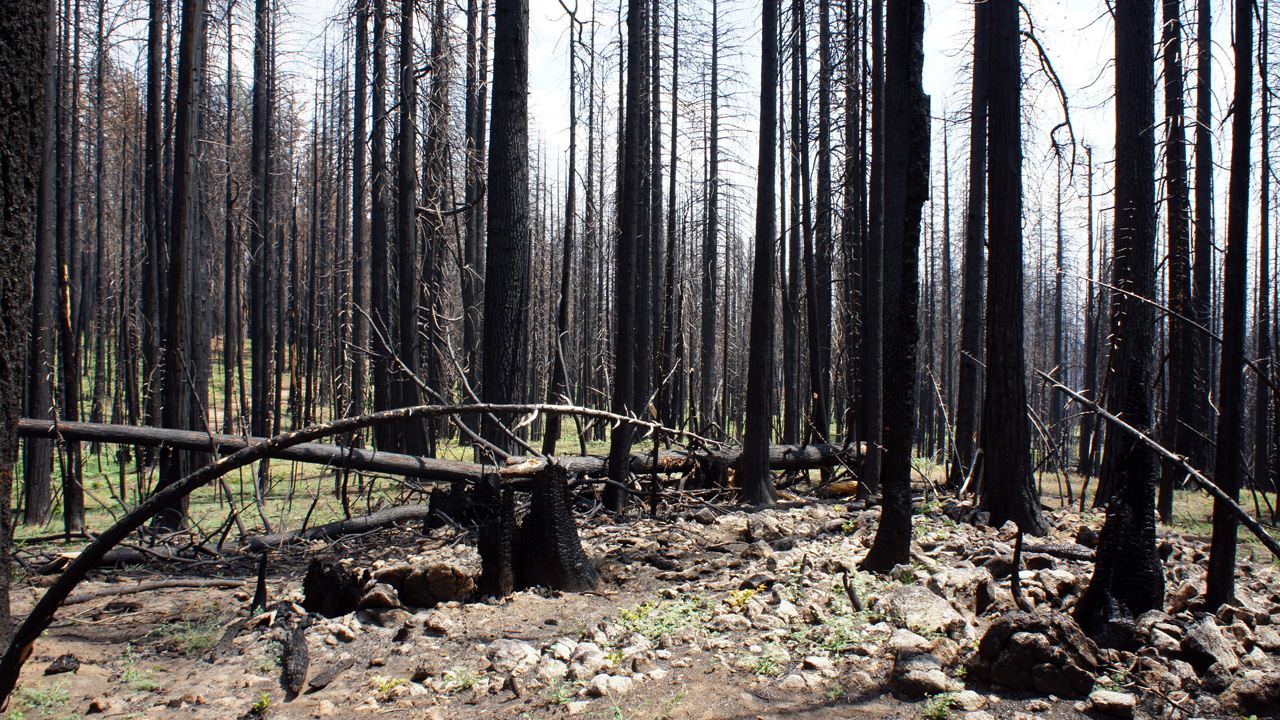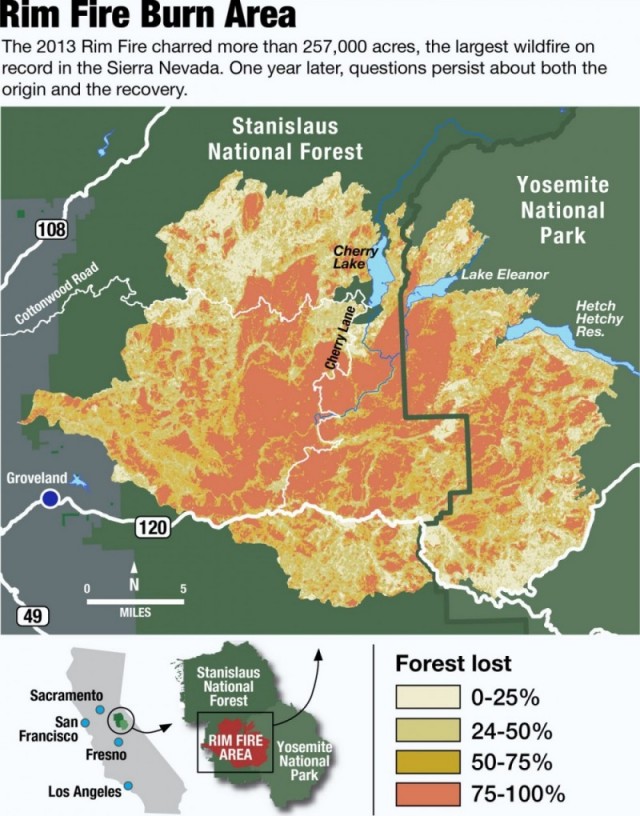By Scott Smith
Associated Press

A U.S. Forest Service decision released Wednesday will allow loggers to remove dead trees from 52 square miles of forests blackened last year in a massive central California wildfire, a move contested by environmentalists.
The highly awaited decision came amid a standoff between environmentalists and supporters of the timber industry over what to do with the trees that died in the massive Rim Fire, which started Aug. 17, 2013, and burned more than 400 square miles of the Stanislaus National Forest, Yosemite National Park’s backcountry and private timber land. It threatened thousands of structures, destroyed 11 homes and cost more than $125 million to fight.
Environmentalists had argued against logging the land, saying the blackened trees and new growth beneath them create vital habitat for dwindling birds such as spotted owls and black-backed woodpeckers.
